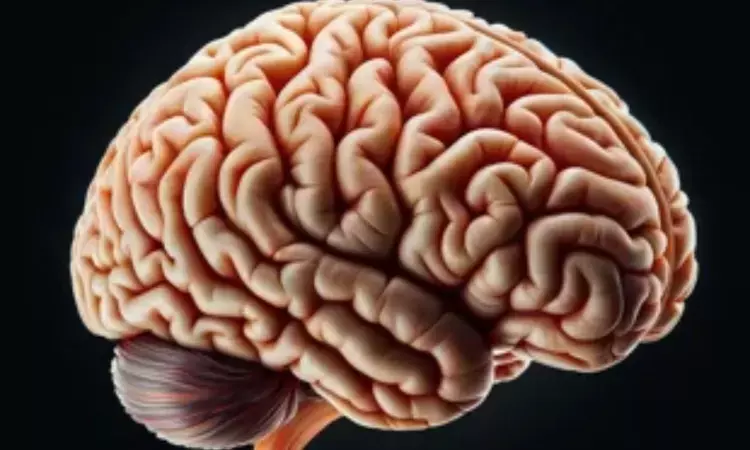- Home
- Medical news & Guidelines
- Anesthesiology
- Cardiology and CTVS
- Critical Care
- Dentistry
- Dermatology
- Diabetes and Endocrinology
- ENT
- Gastroenterology
- Medicine
- Nephrology
- Neurology
- Obstretics-Gynaecology
- Oncology
- Ophthalmology
- Orthopaedics
- Pediatrics-Neonatology
- Psychiatry
- Pulmonology
- Radiology
- Surgery
- Urology
- Laboratory Medicine
- Diet
- Nursing
- Paramedical
- Physiotherapy
- Health news
- Fact Check
- Bone Health Fact Check
- Brain Health Fact Check
- Cancer Related Fact Check
- Child Care Fact Check
- Dental and oral health fact check
- Diabetes and metabolic health fact check
- Diet and Nutrition Fact Check
- Eye and ENT Care Fact Check
- Fitness fact check
- Gut health fact check
- Heart health fact check
- Kidney health fact check
- Medical education fact check
- Men's health fact check
- Respiratory fact check
- Skin and hair care fact check
- Vaccine and Immunization fact check
- Women's health fact check
- AYUSH
- State News
- Andaman and Nicobar Islands
- Andhra Pradesh
- Arunachal Pradesh
- Assam
- Bihar
- Chandigarh
- Chattisgarh
- Dadra and Nagar Haveli
- Daman and Diu
- Delhi
- Goa
- Gujarat
- Haryana
- Himachal Pradesh
- Jammu & Kashmir
- Jharkhand
- Karnataka
- Kerala
- Ladakh
- Lakshadweep
- Madhya Pradesh
- Maharashtra
- Manipur
- Meghalaya
- Mizoram
- Nagaland
- Odisha
- Puducherry
- Punjab
- Rajasthan
- Sikkim
- Tamil Nadu
- Telangana
- Tripura
- Uttar Pradesh
- Uttrakhand
- West Bengal
- Medical Education
- Industry
Study explores Surgical Techniques: Comparative Analysis on Repair of Superior Semicircular Canal Dehiscence

USA: Superior semicircular canal dehiscence (SSCD) is a rare but potentially debilitating condition that affects the inner ear. Patients with SSCD often experience symptoms such as vertigo, hearing loss, and imbalance due to a thinning or absence of bone in the superior semicircular canal. While relatively uncommon, it can significantly impact a person's quality of life. Therefore, the choice of surgical technique for repairing SSCD is crucial in alleviating symptoms and restoring normal vestibular function.
The study showed that the transmastoid approach for SSCD demonstrates a shorter length of hospital stay and operative times. The TM and middle cranial fossa (MCF) approaches have comparable audiometric and clinical outcomes. The findings were published online in Otolaryngology-Head and Neck Surgery on May 28, 2024.
The most traditional surgical approach for SSCD repair involves the transmastoid route, where surgeons access the inner ear through the mastoid bone behind the ear. This technique allows direct visualization of the affected area and is effective in repairing the dehiscence using materials such as bone cement or autologous tissue. However, it requires extensive drilling of the mastoid bone and carries the risk of damaging surrounding structures, leading to potential hearing loss or vestibular dysfunction.
Alternatively, a middle fossa approach offers a more direct route to the superior semicircular canal through a craniotomy above the ear. This technique provides better access to the dehiscence without the need for extensive mastoid drilling. It also minimizes the risk of damaging adjacent structures and preserves hearing function to a greater extent. However, the middle fossa approach may be associated with a longer recovery time and a higher risk of postoperative complications such as cerebrospinal fluid leakage.
Against the above background, Evan L Tooker, Department of Otolaryngology-Head and Neck Surgery, University of Utah, Salt Lake City, Utah, USA, and colleagues aimed to compare outcomes for subjects who underwent middle cranial fossa or transmastoid repair of superior semicircular canal dehiscence.
For this purpose, the researchers identified subjects who underwent MCF or TM repair of SSCD between 1999 and 2023. The main outcome measures included demographic data, clinical presentation, length of surgery and hospital stay, and audiometric testing.
The study led to the following findings:
- Ninety-three subjects (97 ears) who underwent surgery for SSCD met inclusion criteria: 57 via MCF, 38 via TM, and two via TM + MCF.
- Median operative time was shorter for the TM (35) compared to the MCF (29) approach (118 vs 151 minutes).
- Median hospital stays were shorter for TM (36) compared to the MCF (56) approach (15.3 vs 67.7 hours).
- 92% of MCF and 92% of TM surgeries improved or resolved one or more symptoms.
- There was no significant preoperative to postoperative change in the median air conduction pure-tone average (PTA), air-bone gap, or word recognition score in the MCF and TM groups.
- There were improvements of >10 dB in the pre- to postoperative absolute change in bone conduction PTA in 3 subjects in the MCF group and 4 in the TM group.
Overall, the surgical approach for repairing SSCD should be tailored to each patient's specific condition, considering factors such as the location and size of the dehiscence, the patient's overall health, and the surgeon's expertise. While traditional open surgeries remain the gold standard, minimally invasive endoscopic techniques show promise in offering comparable outcomes with fewer complications. Further research and clinical studies are needed to establish the long-term efficacy and safety of these evolving surgical approaches in SSCD management.
Reference:
Tooker EL, Hamilton CA, Takkoush S, Espahbodi M, Patel NS, Gurgel RK. Comparing Approaches for Repair of Superior Semicircular Canal Dehiscence. Otolaryngol Head Neck Surg. 2024 May 28. doi: 10.1002/ohn.841. Epub ahead of print. PMID: 38804678.
Dr Kamal Kant Kohli-MBBS, DTCD- a chest specialist with more than 30 years of practice and a flair for writing clinical articles, Dr Kamal Kant Kohli joined Medical Dialogues as a Chief Editor of Medical News. Besides writing articles, as an editor, he proofreads and verifies all the medical content published on Medical Dialogues including those coming from journals, studies,medical conferences,guidelines etc. Email: drkohli@medicaldialogues.in. Contact no. 011-43720751


